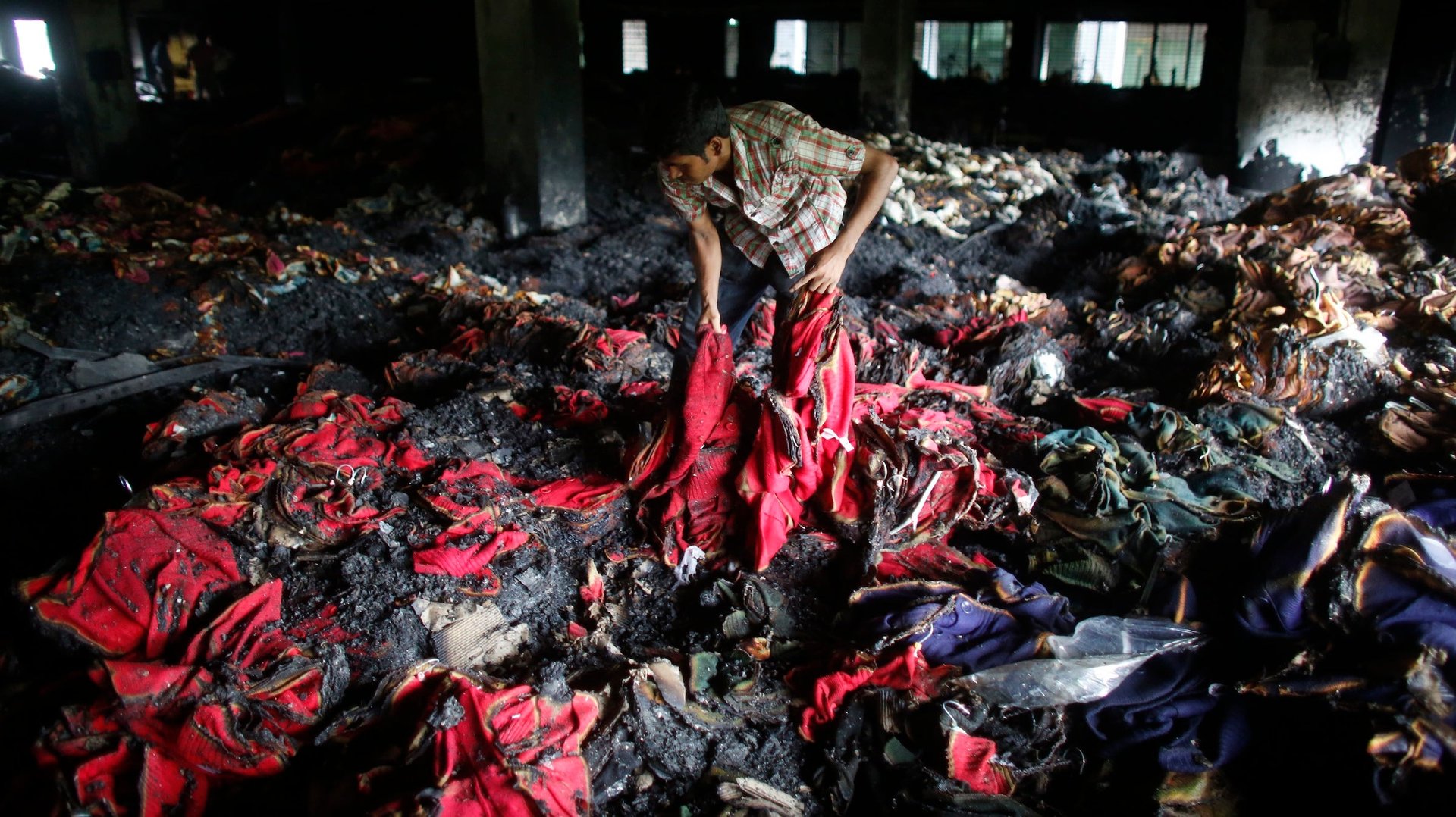Here are the differences between the US and European retailer plans to make Bangladeshi factories safer
On July 10, 17 American retailers and clothing manufacturers—including Wal-Mart, Gap, and JC Penney—announced a pact to improve safety conditions at garment factories in Bangladesh. The initiative is seen as a rival to another safety accord finalized by over 70 retailers, mostly European, just days ago that’s considered stricter. (Here’s our handy visual explainer on how that plan works.) Both are attempts to prevent a repeat of the factory collapse in April that killed over 1,1000 Bangladeshi workers, mostly women.


On July 10, 17 American retailers and clothing manufacturers—including Wal-Mart, Gap, and JC Penney—announced a pact to improve safety conditions at garment factories in Bangladesh. The initiative is seen as a rival to another safety accord finalized by over 70 retailers, mostly European, just days ago that’s considered stricter. (Here’s our handy visual explainer on how that plan works.) Both are attempts to prevent a repeat of the factory collapse in April that killed over 1,1000 Bangladeshi workers, mostly women.
The US pact calls for inspecting all its members’ suppliers in Bangladesh within a year, drawing up common safety standards within the next three months, and forming worker committees to which workers can report safety concerns without worrying about reprisals from managers. The European deal legally binds its members to help bear the costs of repairing and upgrading factories for better safety. Here’s a breakdown of how the two plans differ:
